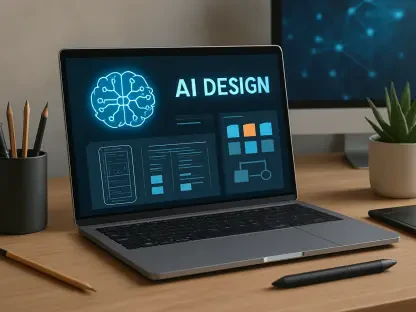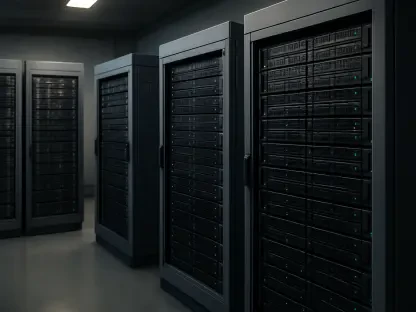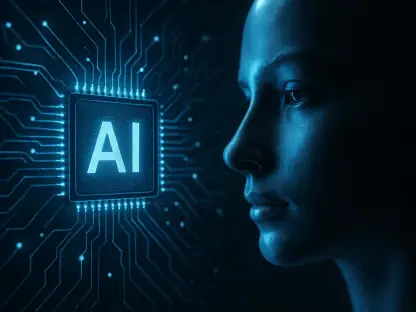I’m thrilled to sit down with Vijay Raina, a leading expert in enterprise SaaS technology and software design. With a wealth of experience in building innovative tools and providing thought leadership in software architecture, Vijay has a unique perspective on how technology can empower businesses while keeping the human element at the forefront. In this conversation, we dive into the philosophy of creating systems that enhance human judgment, the balance between automation and creativity, and the importance of empathy in design. We also explore how to transform internal projects into scalable solutions and the future of human-centered technology.
Can you share the story behind your belief that technology should amplify human judgment rather than replace it?
My belief in this principle stems from years of observing how technology can either empower or alienate people. Early in my career, I worked on projects where automation was pushed as a complete solution, but it often left teams frustrated because their expertise was sidelined. I realized that the real value of tech, especially in SaaS and software design, lies in handling repetitive, data-heavy tasks so humans can focus on strategy and creativity. Over time, working across various industries, I saw how systems that respected human insight led to better outcomes—whether it was in decision-making or fostering innovation.
How do you approach designing software systems to ensure they support human decision-making rather than overshadow it?
It starts with deeply understanding the problem before jumping into solutions. I always ask what the end goal is and what unique value humans bring to the table. For instance, in enterprise SaaS, I design tools to automate mundane processes like data aggregation or reporting, freeing up teams to analyze trends and make strategic calls. The key is to create a seamless partnership—technology provides the insights, but humans drive the direction. It’s about building trust in the system so users feel supported, not replaced.
When it comes to automation, how do you decide which tasks to offload to technology and which to keep in human hands?
I focus on automating tasks that are repetitive or prone to error, like data processing or routine monitoring, because these drain time and energy. For example, in a recent project, we automated performance tracking for a client, which saved hours of manual work each week. However, anything involving nuance, emotional intelligence, or high-stakes strategy—like interpreting customer feedback or setting long-term goals—stays with humans. The balance comes from constant feedback; I check in with users to ensure the system isn’t overstepping or under-delivering.
Can you tell us about a time when automation in your work created more room for creativity or collaboration among teams?
Absolutely. In one enterprise SaaS project, we built a system to automate ticket categorization and basic issue resolution for a support team. Before this, they spent most of their day sorting through requests manually. Once the automation was in place, the team could focus on complex customer issues, brainstorm better service strategies, and even collaborate with product teams on feature improvements. The most rewarding part was seeing how it shifted their mindset from reactive to proactive, sparking ideas that directly improved customer satisfaction.
You’ve emphasized empathy in technology design. How do you ensure your systems are accessible and meaningful to users who aren’t tech-savvy?
Empathy in design means meeting users where they are. I prioritize clear, intuitive interfaces and avoid jargon in outputs. For instance, in a recent analytics tool I developed, we included simple explanations alongside data points and used visuals that told a story rather than just presenting numbers. I also engage with non-technical users during the design phase to understand their pain points. If a marketing manager can look at a dashboard and immediately grasp what’s important without a tutorial, I know I’ve done my job.
Transforming an internal tool into a scalable SaaS product can be challenging. What was the toughest hurdle you’ve faced in such a transition, and how did you overcome it?
The biggest challenge is shifting from a narrow, internal focus to a broad, external one. Internally, you know the users and their specific needs, but a SaaS product must cater to diverse clients. In one case, adapting an internal reporting tool meant rethinking the entire user experience to accommodate varying levels of expertise and business goals. We spent a lot of time gathering feedback from potential external users and iterating on features. It was tough to let go of assumptions, but that openness to change ensured the product was flexible and valuable to a wider audience.
How do you tackle the risk of information overload when designing analytics or data systems for teams?
Overload kills clarity, so I design systems to prioritize relevance over volume. I focus on surfacing the most critical insights first and layering in details only as needed. For example, in a recent dashboard project, we highlighted key performance metrics upfront with the option to drill down for specifics. I also frame data with context—why a number matters and what action it suggests. This approach turns data into a tool for focus rather than a source of confusion, helping teams make quicker, more confident decisions.
In fast-paced environments like startups, adaptability is key. How has working in such settings influenced the way you build software systems?
Startups taught me to design for change. Priorities shift, resources are tight, and you’ve got to pivot fast. I build systems that are modular, so they can evolve without a complete overhaul. I also focus on making them intuitive under pressure—if a system can’t be used effectively in a crunch, it’s useless. Beyond tech, I’ve learned to bake in a kind of emotional intelligence; when things go wrong, the system should guide users calmly with clear next steps, not add to the chaos. That builds trust, especially in high-stakes moments.
Looking ahead, what’s your forecast for the future of human-centered software design in the SaaS and enterprise space?
I see the future moving toward even deeper integration of human and machine collaboration. Software will become less about static tools and more about dynamic, conversational partners that adapt in real time to user needs. In the SaaS and enterprise world, this means systems that not only automate but also anticipate, suggest, and learn alongside teams. I believe organizations will prioritize building cultures that view technology as an extension of human curiosity and judgment, fostering environments where data drives dialogue and innovation. It’s an exciting shift, and I’m eager to see how it unfolds.









